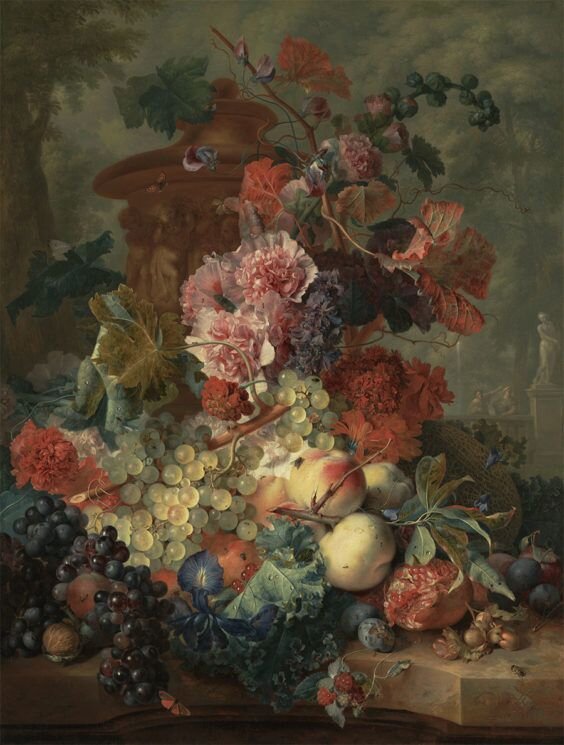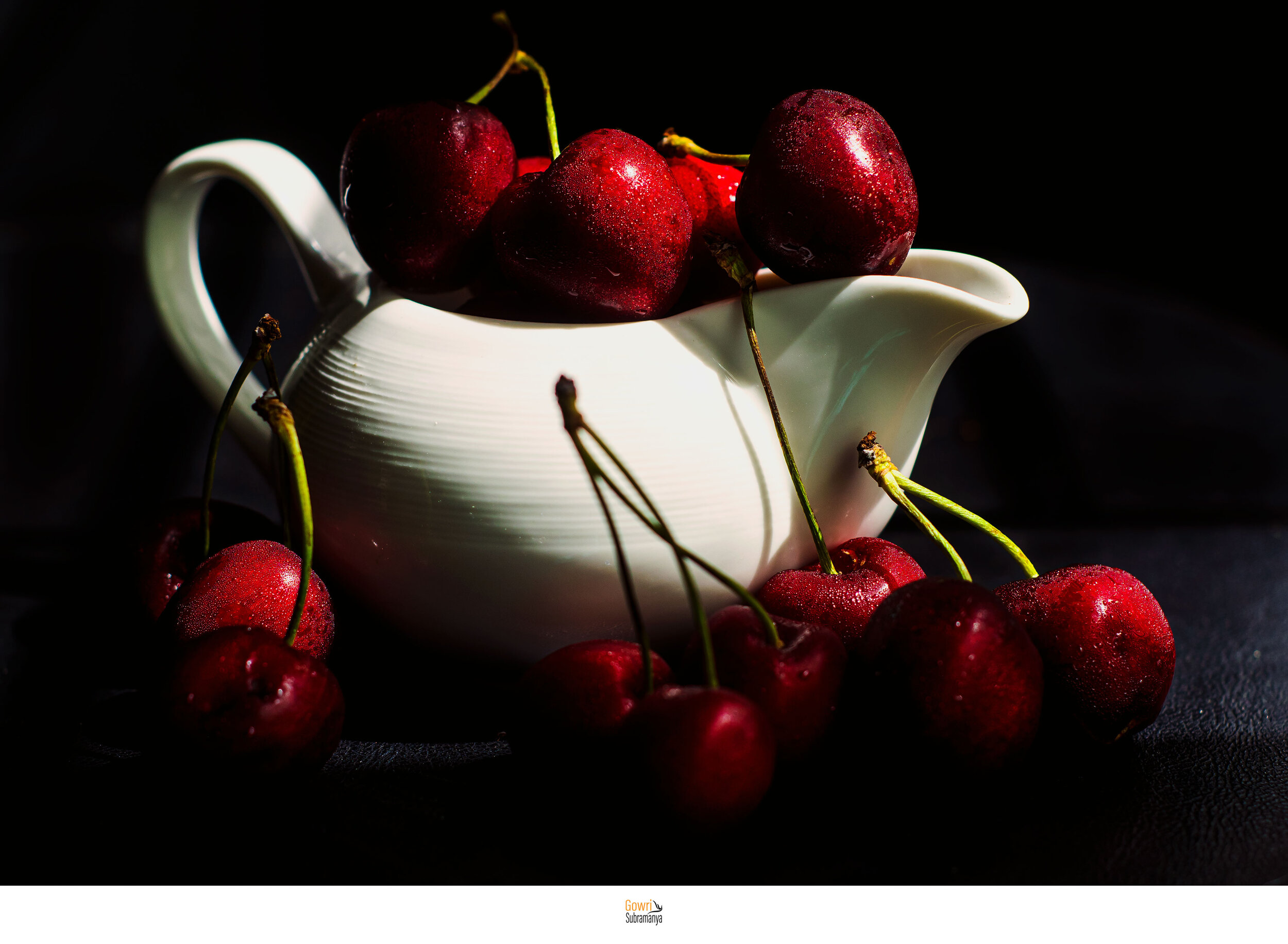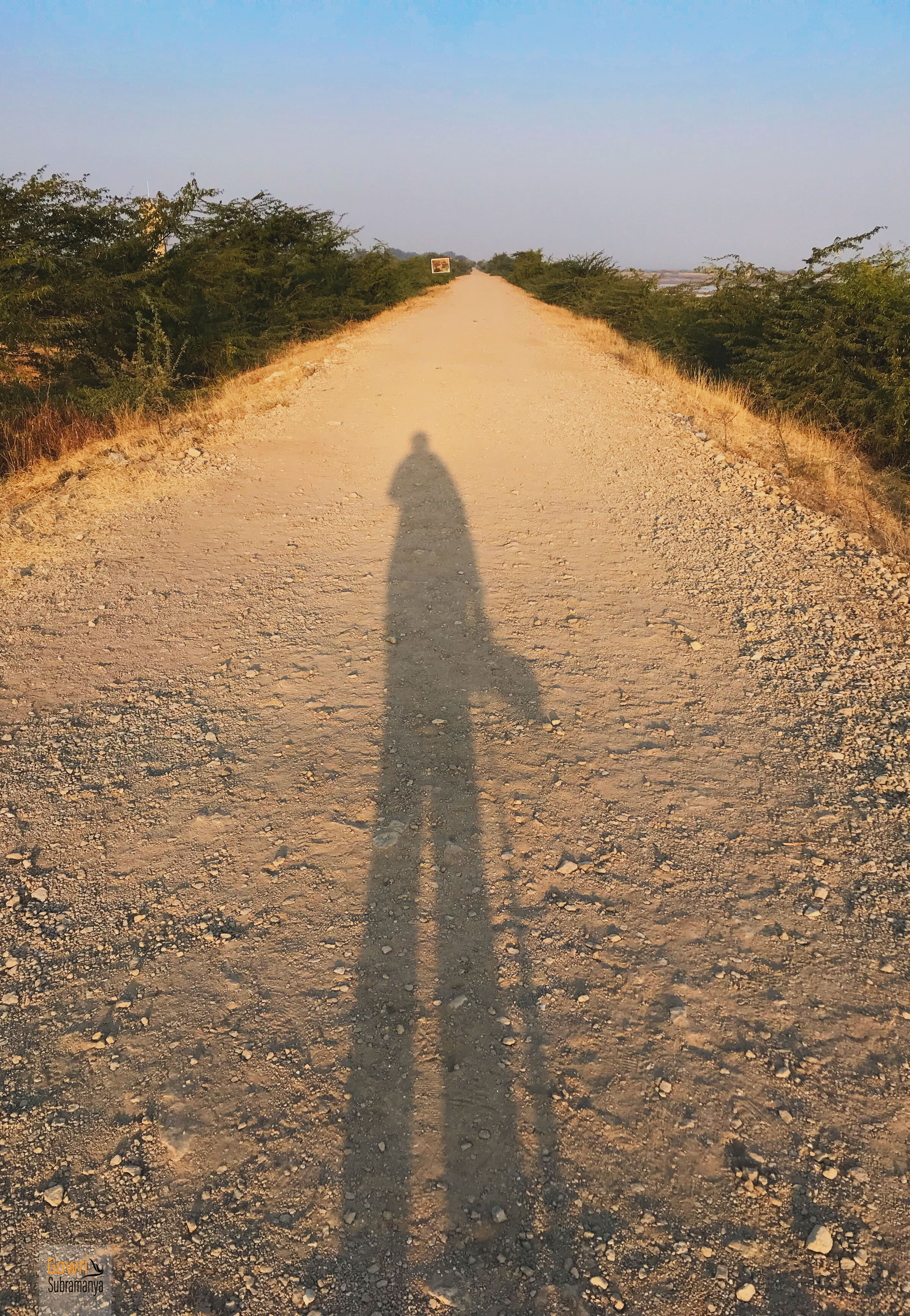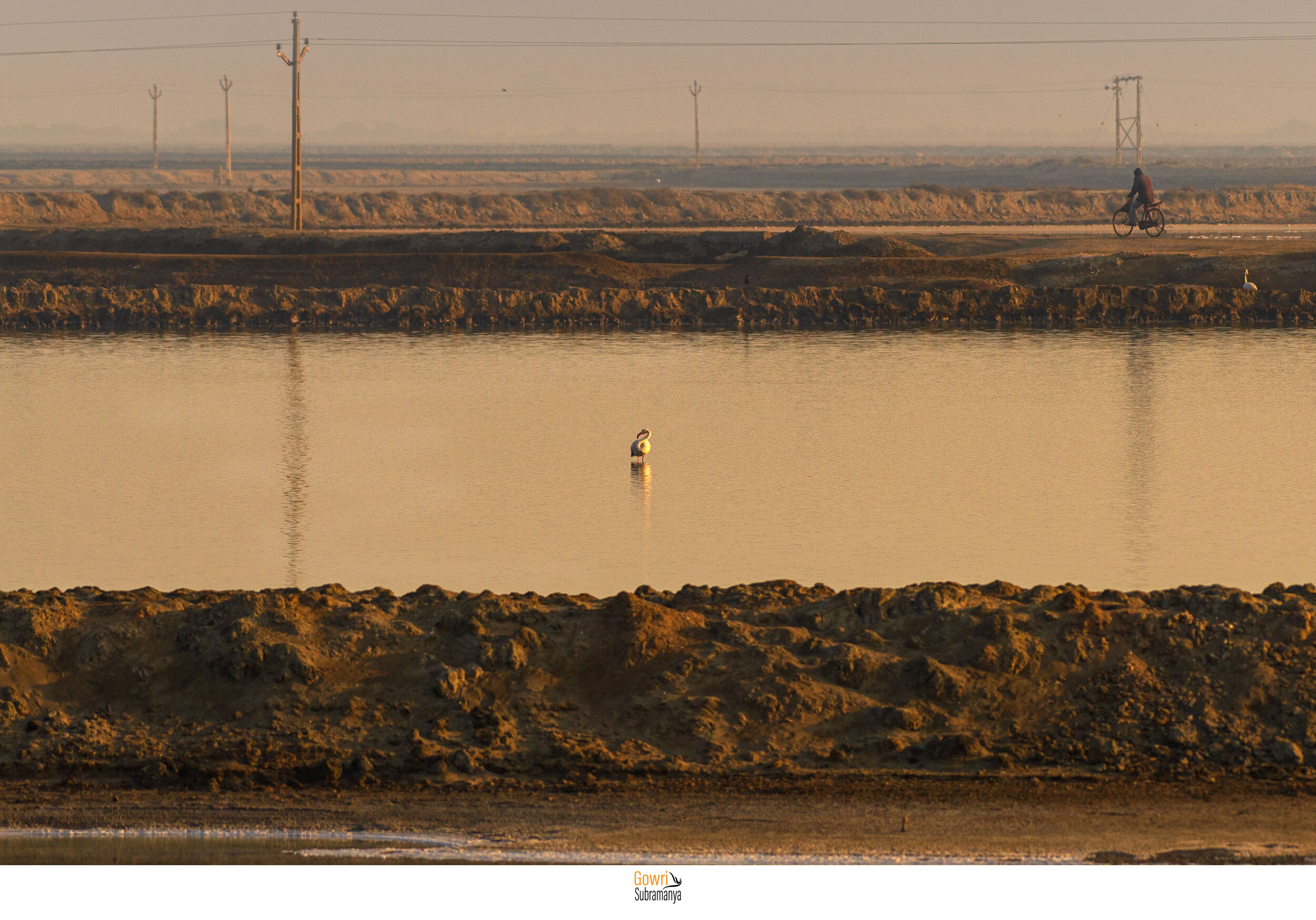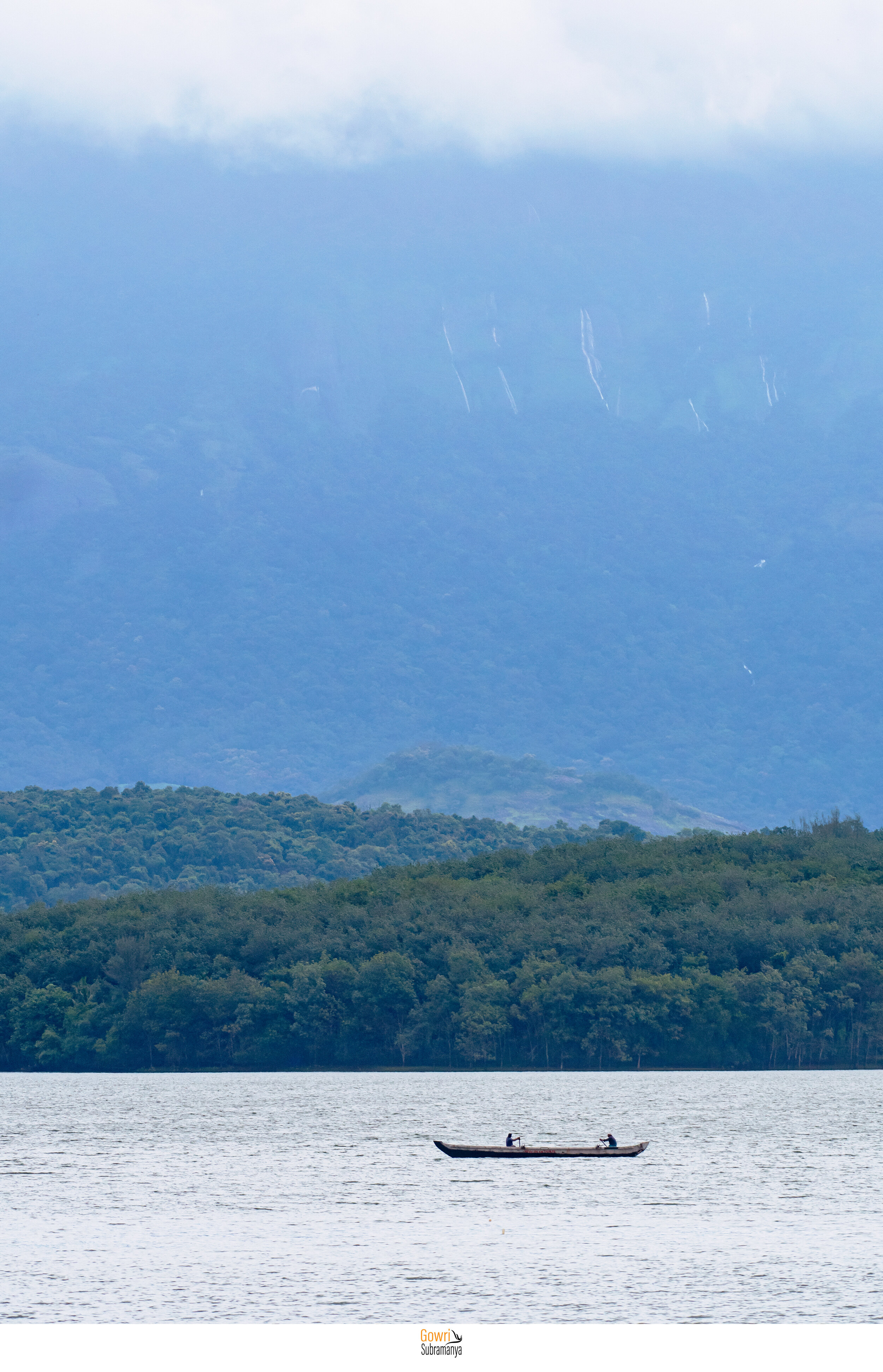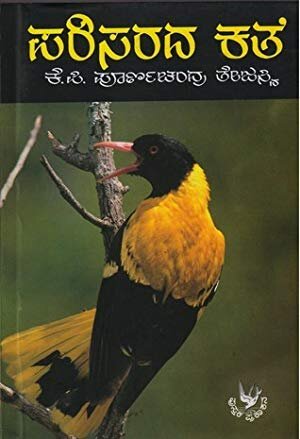Make The Most Of Your Nature Photography With Adobe Express Tools
Adobe Express offers a range of tools and features to help you enhance those photos and take your nature photography to the next level, and you don't have to worry about covering a major cost.
Capturing nature in its most beautiful form is exciting and fulfilling, especially for photographers who are new to the process. While taking the perfect shot can be difficult, it can often be more challenging to find an editing program that allows you to make the changes you need without charging an exorbitant fee. Adobe Express offers a range of tools and features to help you enhance those photos and take your nature photography to the next level, and you don't have to worry about covering a major cost. In this blog post in collaboration with Adobe, I’ll share some of the best benefits of Adobe Express.
Access Thousands of Resources to Create Your Projects
Adobe Express has an extensive library of free stock photos, templates, icons, and fonts that you can use to create eye-catching projects. Whether you're creating a portfolio or designing a poster for an upcoming sale on prints, these resources are ideal for giving your projects a professional look. These resources are easy to use, even if you have no prior design experience.
Create Eye-Catching Social Media Posts
Creating engagement on social media platforms such as Instagram and Twitter can be a great way to share your nature photos with the world. With Adobe Express, you can create stunning social media posts with ease. You can choose from thousands of templates or create something completely unique with their versatile editing tools without losing quality, whether you've shot photos or videos.
Create A Beautiful Portfolio
If you’re serious about selling your nature photography professionally, then having a portfolio site is essential. With Adobe Express, you can design an impressive website that showcases all of your best work in one place, from individual galleries for each particular photo series to detailed descriptions of each image. This will help give potential clients an overview of what they could expect when working with you.
Edit Both Photos and Videos
Adobe Express gives users the ability to edit both photos and videos, making it easier than ever before for amateur photographers to make their nature photography stand out in what can often be a crowded creative field. From cropping images to adding filters and adjusting exposure levels - no aspect of photography is left untouched by these powerful editing tools. With videos, you can edit the format or make sizing adjustments in order to properly upload them online.
Make Print Marketing Materials for Your Photography Business
Print marketing materials such as flyers or business cards are essential for any entrepreneur looking to promote their work. With Adobe Express, you can design custom print materials quickly and easily, giving potential clients all the information they need about your services in one place. Plus, you can save digital copies of these materials so that they’re always at hand when needed. Here are a few of the projects you can create:
● Do you create a lot of video content for your business or nonprofit? Make a YouTube banner that displays one of your favorite images. This is a great way to introduce a branded visual into your YouTube profile.
● Have an Instagram shop? Make an eye-catching post with a beautiful image and clear text. You can customize your post using your logo so that followers know immediately that it’s you.
● Create a gorgeous slideshow that showcases your prints or products. This is perfect for your website since it allows you to show off new items or services quickly. With Adobe’s tools, you can put together a stunning slideshow in no time.
● Design a business card with a QR code. This is a great way to direct customers or potential clients/employers to your website or portfolio. With Adobe’s free tool, the process takes just minutes.
Chiaroscuro: shining light on still-life photography
Planning a food photoshoot can be overwhelming. So many elements to combine into an appetising whole - like a fruit bowl.
When I started to dabble in food and still-life photography a year ago, it was both exciting and terrifying. As a nature photographer, I had grown accustomed to the idea that when I set out for a photo shoot, the only things I could control were the settings of my camera. Nature decided everything else (with a tiny wiggle room for me to make some adjustments) - the light, the background, the elements in my frame, the composition, even whether my models would show up for the shoot at all. The best way to accomplish anything in a day is to work with what you have and allow yourself to go with the flow. Even then, it’s good to be mentally prepared to return home empty-handed. I’ve heard nature photographers complain about having to work with so little creative control. As frustrating as it can get, I prefer this arrangement of having very little control in my photography. Of course, as I am not a professional, I am under no pressure to deliver a predetermined set of images as per deadlines to a hard-to-please client. So it works in my favour to relinquish all control, to be as lazy as I can be.
This antique masala box almost led me to believe that the secret to good still-life images is shopping for unique props. Thankfully the golden light on the chillis showed me another way.
With indoor tabletop photography, however, I suddenly felt elevated to Director of Everything - I had to make an image from scratch — right from deciding what to shoot to how I want the frame to look. Suddenly, every aspect of image making was in my control. What colour should I use for the background? Do I use a bowl or a plate? How many things can I fit in the frame? How bright, how dark? Daylight or artificial light? Light from above or from the side? Endless questions to be answered even before I touch the camera. Although as a creative, I know there are no right or wrong answers to any of this, there are definitely great or poor choices that would ultimately decide if the image would be satisfying or underwhelming. All this is a perfect recipe for creative block. This is why the one thing writers hate the most is a blank page. Perhaps why designers hate to become managers.
The only way to unblock, I figured, is to cut down the list of decisions to make. It’s what the human brain does all the time - find shortcuts to decisions.
What if I picked a few basic things as working tools that I would use over and over - simple backdrops (black or white boards), favourite shooting spots and simple lighting (window light in the morning), so I was free to visualise the images and compositions that I wanted? What is the one element that appeals to me most in a table top image?
The answer was Chiaroscuro, the interplay of contrasting light and dark in an image. Dramatic highlights turned even more dramatic by deep shadows. The term comes from a painting technique that seems almost synonymous with Caravaggio, but I found myself drawn to it in Dutch and Flemish still-life paintings.
Still life with fruit by Caravaggio. Image Credit: Wikimedia Commons
Rembrandt makes this heart-stopping adventure come alive with the clever use of dramatic light and shadows. Image Credit: Wikimedia Commons
Jan van Huysum uses highlights to depict soft and tender beauty of flowers and fruit in this masterpiece, a stunning work I fell in love with in J. Paul Getty museum, Los Angeles.
Earthy, farm fresh carrots that pop out of the frame, thanks to the golden morning light.
The joy of still-life photography is throwing light on the elegance of the simple and mundane. Understanding the Chiaroscuro way has helped me to ease the complexities and hard work it involves.
Depth
The contrast of light and dark introduces a subtle element into the frame that changes the dynamic between the viewer and the image. It gives the two-dimensional objects in the picture a depth rendering them ‘real’.
Motif
Uneven lighting, with conspicuous highlights, can illuminate a motif you want to work into your image. It can be a single colour or a certain shape that repeats in a frame. Placing various pieces in the line of light to show a common motif adds new meaning to the image.
The motif in this image: a bunch of pink flowers. But what about the figs? Well, the figs are a bunch of flowers turned inward.
The star
One of the biggest advantages of this technique is that you can direct the viewer’s attention to the hero of the story. The single beam of light illuminating one over everything else is almost as good as drawing an arrow and labelling it, “look here!”
Regardless of how light is used, the theme of making the hero of the image stand out, to be admired and desired is the most common message in food photography. At least, commercial photography chiefly aims at evoking desire, to want to grab the food out of the image, to crave for it.
In this context, I love to use contrasting light to highlight the natural shapes and contours of fruits or vegetables.
A bunch of cherries tumbling out of a bowl showing off their best side
Mystery and intrigue
An evenly lit frame with pretty things can be great, but an unevenly lit image captures your imagination and makes you wonder about the things in the shadows you can’t see. To that extent, Chiaroscuro images pique the viewer’s interest, invite them into the frame and hold them there a little longer.
Even as our grandmother gave all the kids sweets and snacks, I would always wonder what else she kept hidden in her brass boxes.
Drama
Even if it’s only a frozen moment, a photo has a story to tell. The story can be boring and dull, or plain and straightforward, or play an entire opera in one frame. And it’s not always down to having a stage full of characters dancing and singing. It can be one actor under a spotlight, drawing a spectrum of emotions from the audience. In a still image, the interplay of dark and light has the same power that music and an actor’s expressions have in a play.
A close study of garlic in various delicate dance moves.
The pounding of fresh masala is a story of every Indian kitchen.
A taste of nostalgia
Nothing beats freshly plucked beets for earthiness.
A significant impact of contrasting light in a picture is that it adds a certain ‘mood’ to the image. People talk about‘moody’ or ‘atmospheric’ light in an image but struggle to put into words what the ‘mood’ conveys. They don’t have to. After all, the very idea of pictures is to replace words that fail. However, as a writer, I must try and make my words sweat a little before giving up.
The defining aspect of Chiaroscuro images is the partial illumination of a frame. In my view, the reason this simple effect is so appealing is that it holds the power of collective memories of humans of an age before electric lights became the order of the day. A light beam reminds us of the morning rays through the kitchen window or the golden rays of a setting sun into the living room, signalling that it was time to wrap up work for the day. The angle of light, the softness or hardness of it, the way it shafts in through gaps and holes into our dwelling has centuries of memories, meanings and emotions blended in them. This gives the images an earthy taste of nostalgia.
The iconic ‘Glow of Hope’ by S L Haldankar
We grow accustomed to the Dark —
When light is put away —
As when the Neighbor holds the Lamp
To witness her Goodbye —
A Moment — We uncertain step
For newness of the night —
Then — fit our Vision to the Dark —
And meet the Road — erect —
And so of larger — Darknesses —
Those Evenings of the Brain —
When not a Moon disclose a sign —
Or Star — come out — within —
The Bravest — grope a little —
And sometimes hit a Tree
Directly in the Forehead —
But as they learn to see —
Either the Darkness alters —
Or something in the sight
Adjusts itself to Midnight —
And Life steps almost straight.
~ Emily Dickinson
Do you have thoughts on still life or food images? What makes them appealing to you? Leave a comment to share your thoughts, I would love to read them.
Flashback 2019
For the first ever time, I sat down with my diary to review the year in retrospect. (And what a year it has been!) For the last few years, I had neither the energy nor the inclination to go over a handful of pleasant memories scattered over long, traumatic months. 2018 had been the fag end of that unpleasant time period, with many heartening developments, but not without its share of difficulties and anxieties.
2019 turned almost all of that unpleasantness on its head.
The euphoria of realising what a richly fulfilling year it has been led me to compile this ‘flashback’ in pictures.
* * *
Khijadiya Bird Sanctuary | January
On the morning of the 1st of January, I found myself standing at the entrance of Khijadiya Bird Sanctuary, on the outskirts of Jamnagar. How I landed there is a story for another day (which I shall tell shortly). I had a pleasant tingling sensation in my stomach, a gentle buzz of contentment.
Entering 2019
At the entrance of Khijadiya Bird Sanctuary, Jamnagar
As I walked up the trail looking around at the salt pans and stretches of water, lesser flamingos and great white pelicans spread over what looked like an infinite stretch, I couldn’t help envy the residents of Jamnagar. Khijadiya was a breezy ride away from the city. After filling my eyes and heart with images of birds for three hours, I took the afternoon flight home.
The vast, rustic expanse that stretches from the village slowly into a protected sanctuary for migrating birds
Common Cranes flying over babul trees found abundantly in the area
Great White Pelicans grace the freshwater side of the sanctuary
Shikra
Biding its time
Finally I found a way to describe the size of a Common Kingfisher - as big as a thorn on the babul tree.
* * *
Jaipur-Ranthambhore | February
This was a trip I had been planning for a few months. It was an opportunity to finally acquaint the family with one of my favourite cities (Jaipur) and wildlife destinations. I could visit both of them over and over and never get bored. After a day in Jaipur visiting the customary Amer, Jaigarh forts, City Palace and Hawa Mahal, we spent a weekend in Ranthambhore.
Amer Fort
Jaipur
Inside the Amer Fort
Tourists on an elephant ride
The gorgeous Hawa Mahal designed to look like Sri Krishna’s crown
Hundreds of Great White Pelicans among herons and egrets at Man Sagar Lake
A detailed photo story on Ranthambhore is here, but I’ll share a few of my favourite images here as well.
Starting the day’s safaris with a Rufous Treepie
A young tigress on her morning walk
A young mother famously known as ‘Arrowhead’ feeding herself on a deer kill.
* * *
Chilika Lake | April
By now, I had begun to realise that special blessings were pouring in this year. As if to reaffirm this, a completely unexpected opportunity showed up. A dear friend (hat tip to you, Murali sir) invited me to join his team’s weekend trip to Odisha where we had the great fortune of a glorious darshan of Puri Jagannath on Yugadi (talk about another great New Year’s day) and a day at Chilika Lake admiring the stunning landscape and hordes of shore birds.
Chilika Lake, the second largest salt water lake in the world
Kalijai, one of the many islands on the lake.
Rowboats at Mangalajodi ferry tourists and birdwatchers around for a unique birdwatching experience
The Eastern Ghats form a backdrop to the waters of the lake inviting thousands of migrating birds every year
Glossy Ibis, adding a dash of brilliance to the already-colourful landscape.
* * *
Food Photography | May
In a fit of inspiration, I signed up for a Food Photography workshop with Simi Jois, to challenge my creative cells into stepping out of a rut. I had been following Simi’s work on Instagram for a while, and was overjoyed when she announced a workshop on her visit to India. Not only did it open up a whole new facet of creativity but also made me develop a finer appreciation of what it takes to be a nature photographer. This section deserves a whole write-up for itself (another story lined-up!) but here’s a preview of photos taken at the workshop and my consequent attempts at home.
Spice board
Styled by Simi, this was our first practice activity at the workshop.
Summer special
The mango season essentials
The warmth of festivities
Best relished with traditional delicacies
Figs - when nature challenges its own creative templates
Farm to Table
An experiment with fresh organic produce
* * *
Sirsi - Gokarna | May
The last week of May is the time to visit a temple or two from the family bucket list. This time it was the long overdue Marikamba temple at Sirsi and Gokarna Mahabala in Uttara Kannada district. The road trip through the scenic Western Ghats piercing their way right into the ocean was a soulful experience.
Sathoddi Falls, Sirsi
Evening at Gokarna
Kudlu Beach
A quiet beach surrounded by rocky outcrops
Monsoons were a break from travelling, but this was a time I spent on inner work - there was much journaling, writing, reading, new collaborations and work projects all of which came through after being in limbo for years. This website, for instance, had been in the works for many years before coming alive in a sudden rush this September. It was like a rusty gate had opened up after much heaving and creaking.
* * *
Kanyakumari | October
Deepavali called for a short break with family at Anantya Resorts near Chittar Lake in Kanyakumari district. At the southernmost edge of the Western Ghats, the place is nestled on the bank of the lake with a beautiful view of the cloud-covered mountains. In the world of travel advertising we hear the phrase, ‘a relaxing escape’, over and over. Anantya is an epitome of that phrase. (Not a paid endorsement)
The rubber plantation at the resort
Fishing Boat
An early morning view from the resort’s restaurant
Thriparappu Mahadeva Temple
A beautiful temple on the bank of Kodiyar river
Thriparappu Falls
Displaying all the might of the monsoon
As the year draws to an end, taking stock of the sudden change in fortune has overwhelmed me even as I see more projects lined up on the horizon of 2020. I can feel the double breath of Janus upon my neck already.
* * *
One thing is for sure. There will be a lot more stories and updates coming up here. I am sending out monthly updates in the form of newsletters starting this month. Do sign up if you like my work and would want to know the latest.
Here’s wishing everyone a glorious 2020!
The Initiation
Meandering around sparrows, koels and orioles, I find meaning and life purpose in nature. This is the story of my initiation into birds.
My first job was all desk work for eight hours a day, in an air-conditioned, modern corporate office — the type that’s glass on all sides, to bring the outside view right into your workspace, to make you ignore how boxed in you are. It’s how I felt on most days sitting at my desk with ringing phones and glaring computer screens all around, the oppressiveness of it made bearable by the natural wallpaper on the glass walls anywhere I turned. I’m grateful for the glass walls many times over; if not for it, I wouldn’t have spotted my first Golden Oriole.
Golden Oriole
The blinds next to the coffee vending machine were up, so my eyes strayed out to the nearest tree. The dark green leaves of the mango tree didn’t even flinch. It was a quiet afternoon both inside the office and outside. Almost immediately, I spotted a bright yellow patch in the foliage. I had to take a second look because this wasn’t mango season; it was impossible that a lone mango could dangle in the tree at this time of the year. It turned out to be a bird. A bright yellow, myna-sized bird with a pink beak and a black eyepatch. I thought I’d struck gold! It flew out a few seconds later, and I rushed back to my desk to find out what exactly I had seen. Googling the bird’s features gave me the name in a few seconds. Golden Oriole. I read all I could about the bird for the next few minutes with a mixture of excitement and disappointment - excited that a pretty bird like that inhabited urban spaces, disappointed that I would not make news headlines. A few months later, I bought a proper bird guide and a pair of binoculars, signed up to online nature forums and made birdwatching trips outside the city every weekend.
I remember this incident because it was a turning point in my journey as an active nature photographer. But it wasn’t the first time that observing birds had excited me. It went way back.
* * *
When I was seven years old, we had to move out of the flat we were staying in. Amma found an old house for rent. It was built in the '60s as part of a housing society for government employees. It looked as rustic as a cottage on the edge of the woods, even though it was a townhouse in a busy neighbourhood. The landlady had lived in it till her husband’s death and had now moved to a different part of the town with her grown sons. She couldn’t be bothered about the upkeep of the place. It was messy and looked older than it was. Every other house in the neighbourhood that shared the same history had had a makeover to upgrade its appearance and its amenities. Not this one. The old lady, however, wanted the same rent the others in the area were fetching. It was slightly more than Amma could afford and much less convenient than she would have liked, so she wasn’t sure about it. But she decided to take it when she looked at my face the first time I saw the house - it had a large backyard with a mango tree that looked as old as the house and an equally large front yard with a large Parijata tree and a rundown garden that looked so wild that I was transported to a different world. All a child needs is a few trees and enough space to make up her own wonderland.
We lived there till I reached high school. It’s where I learned that trees are more than just an ornament or a vending machine. Trees, to my surprise, were mini cities for all kinds of creatures. Summers were a busy time for the mango tree and the koels never let me forget it. I’d tease the koel by imitating its call; it drove the poor bird nuts! Every time I called out, he called back louder. It would go on and on. Each time I mocked him, his reply got louder and angrier, until I grew bored with the game. He was never the first one to blink. Amma told me it was cruel to mock him but it was rib-tickling to me. She said the call I heard often and imitated was from the he-koel. He liked to have his tree to himself and his she-koel, with no trespassers. My imitation calls were causing him distress because he thought it was a rude intruder of his own kind and he couldn’t find the trespasser to shoo him away. How did she know it was a he-koel? She said the she-koel had a different song, a faster paced one. She looked different too - bigger than the male with white bars all over her body. Eye-catching yet almost impossible to find in the thick foliage. I spent many hours of the summer vacation under that tree with my neck craned up to spot the pair and observe their antics. I’d try to resist the temptation to tease the male bird but my callous side sometimes got the better of me.
House Sparrow (female)
Avian summer festivities didn’t restrict themselves to the garden alone. One morning, Amma woke me up early with an excited voice, “What do you know, the sparrows are building a nest in the living room!” I suspected this was a ruse to get me out of bed early, something most children refuse to do on holidays. Miffed yet curious, I went into the living room and found nothing out of the ordinary. Amma grinned and pointed to the ceiling fan. A sparrow perched on a blade, facing the ventilation window just below the ceiling. Another sparrow sat on the window gap with a few strands of hay in its beak.
Those days, it was unthinkable to keep doors of the house shut. The front and the back doors were open from the time the first person woke up till sundown when lamps were lit. Sparrows or any creature could come in and out of the house as they pleased, as long as they didn’t fear us and we were certain they weren’t venomous.
Years later, when I read E. M. Forster’s A Passage to India, I chuckled at the author’s observation of creatures in India: “… no Indian animal has any sense of an interior. Bats, rats, birds, insects will as soon nest inside a house as out; it is to them a normal growth of the eternal jungle, which alternately produces houses trees, houses trees.”
That summer we didn’t turn the ceiling fan on, for fear that the birds might get accidentally hurt. It meant we could only go to the living room during the cooler parts of the day. That gave them enough confidence to settle down in their chosen spot comfortably. Amma didn’t mind cleaning up after them as they dropped hay all over, in their nest-building frenzy. She didn’t complain even once about the mess they made of the living room.
Yet again, she could tell the male and female sparrows apart. “Check for the black patch under the throat”, she pointed out to me. “That’s the he-bird.”
House Sparrow (male)
There was payasa one day for lunch. Amma said that little baby sparrows had peeked out of the nest that morning for the first time, so we had to celebrate. It was just as festive when our cat gave birth to her first litter in an old pot in the storeroom.
* * *
I spent my high school days in a house in the suburbs, on the edge of farms, dividing my free time between reading and exploring the land around. With farms so close, I met new birds that even Amma didn’t know names of. So we made up fun names of our own. The Indian Robin flicking its tail shamelessly to show off the red undertail coverts had to be “kempandina hakki” (the bird with a red butt), the bulbul came to be “chotte hakki” (crested bird) and so on. To my delight, my school library ordered new editions of K. P. Poornachandra Tejaswi’s books and story collections - many of them on birds and his life in a coffee estate in Mudigere with his dog Kiwi. Through his books we learnt the Kannada names of our bird visitors, but most days we preferred our made-up names.
The cover of ‘Malenadina Chitragalu’ by KuVemPu featuring the Greater Racket-tailed Drongo
One bold bird Amma knew well and was very fond of - with its glossy black plumage and a forked tail it sallied back and forth from electric cables and street lamps. It was a “Kajana” (Drongo), Amma noted, KuVemPu’s favourite bird. Known as Rashtrakavi, KuVemPu (pen-name for K. V. Puttappa) is a household name in Karnataka. His writings feature nature and the forests around his hometown nestled in the evergreen Western Ghats. His love for the the Greater Racket-tailed Drongo (a cousin of the more common Black Drongo), only found in the deep jungles of Western Ghats and the Himalayas, is legendary. The flamboyant bird with its long tail feathers features regularly in his writings and even on the covers of almost all his books. When he started his own publishing house, Udayaravi Prakashana, the logo was an illustration of two drongos swirling around each other. (K.P. Poornachandra Tejaswi, from whose writings I learnt so much about nature, was KuVemPu’s son. No coincidence.) That’s why Amma was fond of the bird - it reminded her of KuVemPu’s writing and as a result, of her own ancestral home in the Western Ghats.
Google Doodle on Dec 29, 2017
(Google honoured KuVemPu and his love for drongos with this Google Doodle on Dec 29, 2017 for his 113th birthday.)
* * *
Black-hooded Oriole on the cover of ‘Parisarada Kathe’ by K.P. Poornachandra Tejaswi
Things didn’t remain as idyllic once the pressure of college education started to mount. Eventually, the need to earn a living pushed me to the big city. To cut to the chase, the days of my birdwatching faded away from my life and my memories. I found myself in a glass box, amidst constantly ringing phones and glaring computer screens. Waiting for kingfishers on the edge of open wells in neighbouring farms was like a story from another world. Until the Golden Oriole. I now believe that the Oriole came as a messenger from my ancestors who lived their entire lives in the tropical rainforests of the Western Ghats, conversing with birds and beasts more often than humans. (Incidentally, one of my favourite books by Tejaswi that I loved as a child ‘Parisarada Kathe’ (Nature’s story) features a Black-hooded Oriole on its cover. Message received, loud and clear.
Since then, I have asked myself many times why I watch birds. I ask my birdwatching friends this question. All of us list out as many reasons as we can, explaining how fascinating birds are. The more eloquently we talk about them, the more we show how much we have learnt about them. But what drives us in the first place?
A friend asked me the same question last week: why do you watch birds? The way he emphasised on the ‘you’ made me think hard… perhaps it was the koels and the sparrows. Or was it the mango tree and the wild garden? Or something that came before that…
* * *
Scaly breasted Munia
In the middle of the monsoon season this year, Amma came to me with an excited voice. “There are birds nesting in my bathroom window!” I went to her room and peeked in carefully. In the gap between the wired mesh and the window grill, two scaly breasted munias had sneaked in fresh strands of grass - a whole clump of it and awkwardly stuffed it into a ball-shaped nest. Her presence in the bathroom didn’t spook them. They seemed to have figured out that they can’t be reached from the inside. I worried, however, that this nest wasn’t a great idea. Going in and out of the gap was a clumsy job, the position of the nest didn’t seem at all comfortable, but hey, I wasn’t being called to judge. The female munia apparently judged it to be the best.
In the course of the next few days, Amma gave me updates on the progress. Apparently, the male had given up several times (ha! I knew it!) but had to resume building because the female would sit on the window for hours without moving an inch, insistent that the nest be at that exact spot. Every time, the male bird gave up, Amma was disappointed. When he picked it back up, she cheered up. Until one day, after Deepavali, the birds gave it up for good and didn’t return. Amma was visibly upset. I told her that munias make several attempts at nest-building before finally making an inhabitable one and this was par for the course. All that hard work for nothing, she lamented. I tried to explain that this is common among munias. In fact, the younger the birds, the more the number of failed attempts. Way of the world. These days, I often become conscious of how our roles have reversed.
A few days later, I was at my desk in the study room right below Amma’s room. I looked up from my screen when a blip flew past. It was the munia with a blade of grass, trying to build a nest in the neighbouring house. Should I let her know the munias weren’t gone? She’d be setting herself up for another disappointment. It was mid-November. The pair should have been raising young ones by now. This bird was clearly in his first season. Maybe his luck (and skill) will improve next monsoon. I told Amma anyway. Like I had guessed, her eyes instantly lit up with hope. That was good enough for now. If a little bird offers a bright new outlook for the day, why not take it? Isn’t that one of the gazillion reasons we watch birds?
* * * * *









